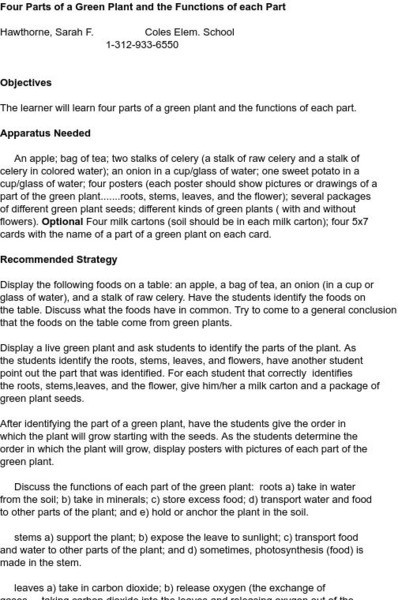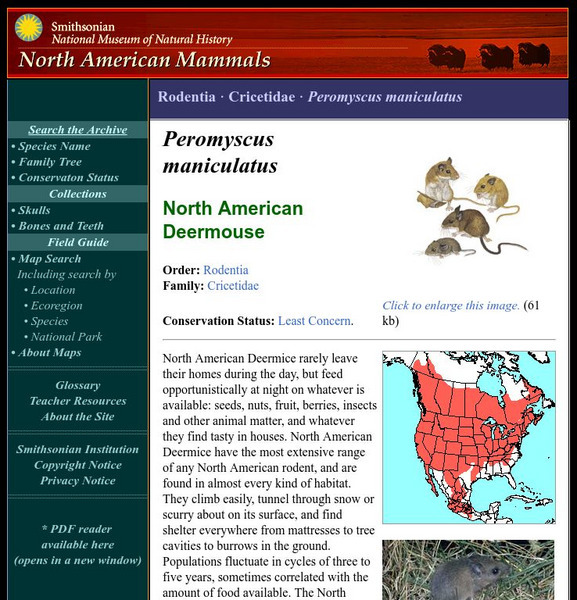Songs for Teaching
Roots, Stems, Leaves Song and Lyrics
Learn about the parts of a plant as you sing this catchy song. You can listen to others sing it, or sing along with the supplied lyrics. Songs help information "stick" with you!
Science and Mathematics Initiative for Learning Enhancement (SMILE)
Smile: Four Parts of a Green Plant and Their Functions
Lesson plan using an apple, tea bag, onion, and celery to teach plant parts and their function.
BBC
Bbc Nature: True Parrots
The true parrot family includes among its many members the macaws, lorikeets, and lovebirds. Species in this family eat mostly seeds, though fruit, nuts, and other foods are also consumed. Learn more about true parrots in this...
Digital History
Digital History: Prosperity: Fact or Myth [Pdf]
Find the reasons for the booming economy in the United States in the 1920s. Can the seeds for the Great Depression be seen in the fruit of the economy? [pdf]
Smithsonian Institution
National Museum of Natural History: American Mammals: Northern Pygmy Mouse
Northern Pygmy Mice are the smallest rodents in North America. They live in a variety of habitats where there is dense ground cover and eat grass seeds and leaves, prickly pear cactus fruit and stems, mesquite beans, and granjeno berries...
Smithsonian Institution
National Museum of Natural History: American Mammals: Long Tailed Vole
Long-tailed Voles need cool, moist habitats, so they are found mostly near the peaks of mountain ranges. Fruits and seeds make up the bulk of their diet, but they also eat fungi, bark, and leaves if necessary. Learn more about the...
Smithsonian Institution
National Museum of Natural History: American Mammals: North American Deermouse
North American Deermice rarely leave their homes during the day, but feed opportunistically at night on whatever is available: seeds, nuts, fruit, berries, insects and other animal matter, and whatever they find tasty in houses. Deermice...
Smithsonian Institution
National Museum of Natural History: American Mammals: Lodgepole Chipmunk
The range of the Lodgepole Chipmunk follows the high Sierra Nevada, and continues along the tops of the San Bernardino and San Jacinto mountains near Los Angeles. Most of the time the Lodgepole Chipmunks forage on the ground, climbing on...









